Zhang Yiming, the former CEO of ByteDance, the Chinese company that owns the popular social media app TikTok, was once faced with a nerve-wracking situation. As he watched the news, he learned that President Donald Trump had threatened to ban TikTok in the US. This move was prompted by concerns about data privacy and security. India had already banned the app, causing a loss of 200 million users.
TikTok has been at the center of a global controversy, with users and governments worldwide questioning its trustworthiness. The app has been accused of being a data collection service disguised as a social network. Some have even suggested that it contains surveillance software for the Chinese government. On the other hand, others consider it to be the most addictive social media app of all time. Some have claimed that it is discriminatory towards disabled people, while others have called it a magnet for predators.
Despite the negative media attention, Zhang reminded himself that TikTok’s business was going incredibly well. In less than four years, the app has been downloaded over 3 billion times globally, making it ByteDance’s biggest product. The company is currently working on other apps with even greater potential. ByteDance’s revenue surpasses that of Twitter, Zoom, Dropbox, Lyft, Snapchat, Shopify, Airbnb, Stripe, Groupon, and Spotify combined. The company has more employees than Facebook and is expanding worldwide at an unprecedented speed.
If you think that TikTok is just a cringy app for kids, you’re mistaken. ByteDance has gone from a small apartment in China to a global empire that is shaping social media, technology, politics, and much more. The inside story of how it happened is fascinating and inspiring. However, America’s tech giants are afraid of ByteDance. The real question is whether you should be afraid too?
The Rise of ByteDance Beyond TikTok
ByteDance is a prolific producer of mobile apps, and while TikTok has proven to be their most successful creation, it was just one of a dozen apps they launched in a matter of months when the company first started in 2012. Among the titles were “Laugh so much you’ll get pregnant” and “Real beauties every day, a hundred beautiful girls,” which established a less-than-stellar reputation for the company. However, ByteDance’s founder, Zhang Yiming, had grander aspirations. He aimed to create a global company that could transcend borders, much like Google, despite the challenges of operating within China’s separate internet ecosystem where popular Western platforms like Facebook and YouTube are prohibited. To achieve this, ByteDance needed to think beyond the simplistic apps they had been creating.
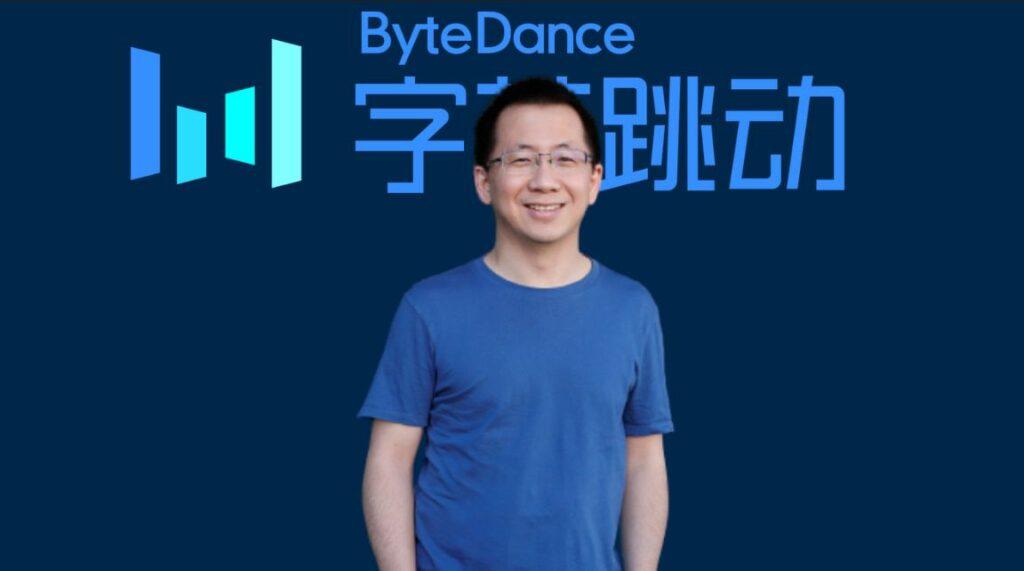
Then one day in 2012, while sitting on a train, Zhang, the founder of ByteDance, had an epiphany. He noticed that people were using their phones more than reading newspapers, which led him to deduce that phones would soon become our primary source of information. Moreover, he realized that this shift would allow individuals to receive personalized content through a combination of AI, big data, and machine learning.
As a result, ByteDance launched its next app, Toutiao, which translates to “Headlines.” Toutiao is a news app with a powerful recommendation algorithm that provides a feed of news stories tailored to each user. Zhang stated that their goal was to become the information platform that understands its users best. By tracking every single tap, pause, and swipe, ByteDance’s algorithm was quickly able to understand users better than they understood themselves. Instead of receiving a random list of articles curated by someone else, the algorithm would figure out precisely which news stories users would be most interested in and give them a unique, personalized feed. The more they use the app, the more accurate its recommendations became. Consequently, it became very addicting and a massive success.
How ByteDance’s Addictive Algorithm is Taking Over Social Media
According to reports, the average user of Toutiao spends 74 minutes per day on the app. However, this is not because people suddenly became more interested in news. It’s because ByteDance designed an incredibly smart algorithm that learns what people like and keeps giving them more of it, making it very addictive.
Not content with just providing personalized news, Zhang wanted to expand ByteDance’s reach. He realized that the same addictive algorithm from Toutiao could be used for short videos. Thus, in 2016, ByteDance launched Douyin, the Chinese version of TikTok. It had the same premise, logo, and interface, but with some major cultural differences. Firstly, it had a section called “Positive Energy,” with selected videos that promote the Chinese government. Secondly, it had advanced facial recognition, allowing users to search for videos by tapping a face. However, this feature led to lawsuits when ByteDance considered introducing it on TikTok. The Chinese version also made people’s skin appear lighter by default in line with China’s whitening obsession.
Despite the differences, both TikTok and Douyin have the same powerful algorithm. It’s unique because it isn’t built around your social network. Users don’t have to friend, follow, subscribe, or even search for anything. They just open the app, start swiping, and the algorithm will get better and better at understanding which videos to show them. Since users consume so many short videos in just a few minutes, it gives the algorithm so much data about what content they do and don’t like.
You could watch a hundred videos in a single session, as opposed to something like YouTube, where you may only watch a small handful. And since you’re not reliant on your social circle for content, you’ll never run out of interesting videos to watch. You’re just one flick away from something totally random and new. Psychologists have found parallels between this and the effect of playing a slot machine in a casino. So when you combine that with the never-ending scroll effect, which tricks our brains into not knowing when to stop using the app, it’s easy to see why people get sucked in.
ByteDance even added a feature where, when you press the back button, it shows you a new video. You have to double-tap the button to actually get out of the app.
However, ByteDance had no problem getting people to watch their new video app. They knew that an addictive algorithm was useless if they didn’t have enough people creating videos as well. Unless they launched a genius five-part plan to get creators on board.
Step one: Lower the barrier to entry. Competition on social media had become tough. Filming simple selfie videos was no longer enough to blow up on YouTube. You needed to learn how to use editing software, create thumbnails, and countless other things which made it difficult for young new creators to get started. So, ByteDance made posting videos ridiculously easy. With built-in editing functions in the app, you could even apply filters and add music to make the video immediately seem way more professional and interesting.
Then step two: Challenges. If you remember the viral Ice Bucket Challenge in 2014, well, so did ByteDance. They realized that if they created challenges within the app that were easy for people to replicate, like a certain dance, and then people didn’t even have to think about original creative content, they could join in by just doing the challenge, which then leads to step three.
Give them a taste of fame. If you look on any social media forums, you’ll find plenty of people complaining about how hard it is to beat the algorithm with YouTube, Facebook, and Instagram. And in stark contrast, you’ll find plenty of people raving about how easily their TikTok videos blew up. Basically, ByteDance realized that by sharing the love around a lot of creators, they’d attract way more people wanting to make videos for the app. It was like a new gold rush for everyone who had gotten late on other social media. You could join TikTok and on your first video rack up millions of views.
And by giving creators a dose of fame and a hit of dopamine, it encouraged them to recruit more people to the app by telling their audience to come and follow them on TikTok. But then this dance started to notice a bit of a problem. Making the barrier of entry so low meant they got an equally low quality of content.
Initially, many people were posting videos on the app, but most of them were just kids lip-syncing or dancing to songs.
Srep Four: To improve the content quality, ByteDance had to bribe the top talent. They messaged creative influencers with big followings on other platforms and offered to pay them to post on their app. They also reportedly went to art schools to find good-looking creative students and promised to make them famous.
Once they had attracted some higher quality content, they manipulated the algorithm to ensure that it got a lot of views, which improved people’s perceptions of how good the content on the app was.
Finally, Step Five: They nurtured relationships by assigning the top creators account managers who would sometimes even help them with school assignments and relationship issues to make sure the users able to create a lot of contents.
ByteDance executed this approach effectively in China, leading Douyin to go viral. Numerous Chinese enterprises attempted to imitate this strategy, but it’s important to note that the more you use ByteDance’s applications, the more their algorithm learns about your preferences. This translates to even more accurate content recommendations, which in turn leads to increased usage and a never-ending cycle of enhancements. As a result, very few individuals were interested in switching to any of the competing apps that emerged. ByteDance successfully decoded the formula in China and aimed to replicate this achievement globally. In 2017, they introduced their international version of the app, TikTok. Despite Zhang Yiming’s high aspirations, even he could not have anticipated the level of madness that ensued.
How ByteDance’s TikTok Became a Global Phenomenon
Let’s begin with a fun quiz. Imagine you own a company that has developed an app which is very popular in China, and now you aspire to compete with the tech industry’s giant corporations worldwide. What would be your strategy?
a) Would you try to lure top talents from competitors such as Facebook and YouTube by offering them lucrative salaries?
b) Alternatively, would you prefer to engage famous influencers from Facebook and YouTube to endorse your product on TikTok?
c) Or would you opt for investing billions of dollars into running advertisement campaigns on Facebook and YouTube, thereby attracting users away from your competitors?
Now, here’s the catch. The answer is not limited to any one option, as ByteDance, the Chinese tech company, implemented all three strategies to make a mark in the global market.
It is remarkable to consider the success of TikTok, as it seems unlikely that they could have achieved such success. The reigning champions of user-generated content, who could have prevented TikTok from becoming a formidable competitor, failed to recognize the threat until it was too late. As a result, TikTok was able to lure away many of their employees, creators, and viewers.
The primary reason behind the underestimation of TikTok is its unprecedented growth rate. The app went from obscurity to ubiquity in an astonishingly short amount of time. So, how did they accomplish this feat?
Well, when ByteDance launched the Chinese version of TikTok, they used a few slightly questionable promotion techniques. For example, they made deals with phone shops to unbox the devices, reinstall their app, and then reseal the box so the app was already there when users switched on their new phone.
However, with the international version of TikTok, one of their first genius marketing tricks was right out in the open for everyone to see. They initially encouraged users to share their TikTok videos on other social media.
Which sounds strange at first. Why would TikTok want to make it easy for people to repost TikToks on Instagram, YouTube, Snapchat, and so on? Simple. Because every TikTok video contains a watermark in the corner promoting their app.
It is for sure that even if you haven’t installed TikTok in your life, you must have stumbled upon a video with the TikTok watermark. It’s the ultimate marketing strategy, and TikTok has revolutionized content creation by providing easy-to-use in-app editing features. As a result, users were creating videos on TikTok and sharing them on all their other social media accounts, providing TikTok with unlimited free advertising.
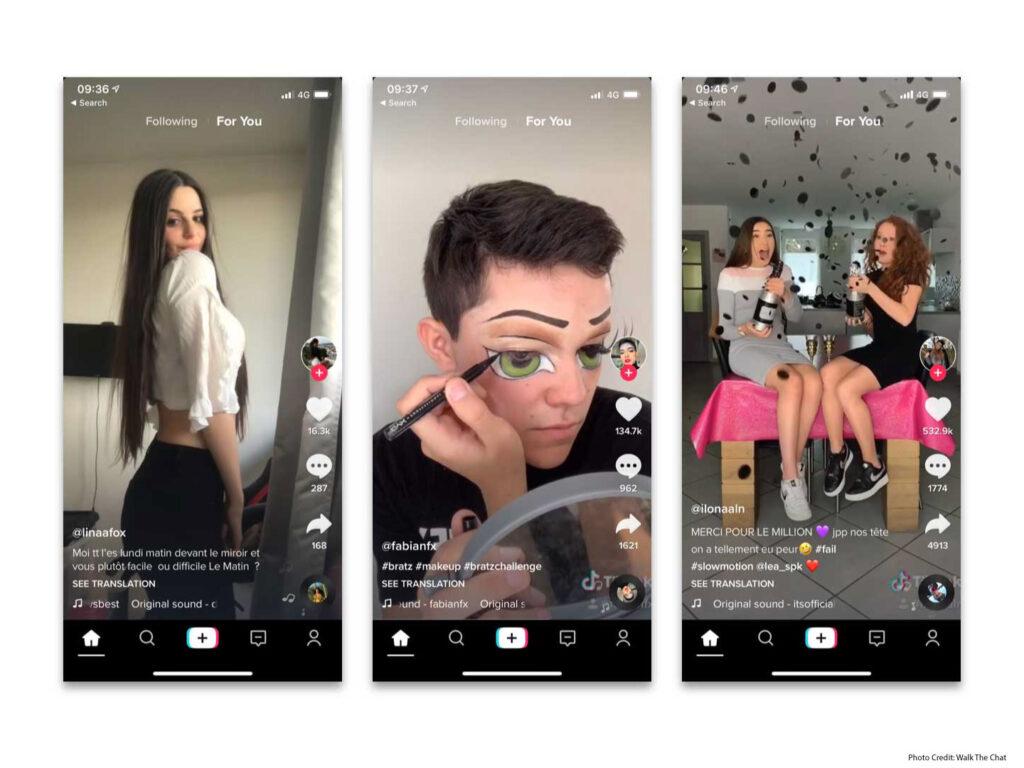
The ByteDance team even made fake accounts on other social media themselves and just reposted lots of the best TikTok videos because they knew that if you see that TikTok watermark enough, eventually you’ll download the app yourself. But as well as free promotion, the TikTok team did plenty of paid ads too.
Now, to create an ad campaign, most companies hire expensive consultants, recording studios, editors, actors, designers, etc. But ByteDance just used videos people had uploaded to TikTok as ads. Their terms and conditions gave them permission to do that. Then all that money they saved on not making ads meant they had more money to invest in actually running ads across all major platforms. They initially targeted highly populated cities with low CPMs, like some of the poorest cities in India. This got them a lot of downloads quickly and cheaply, which shot the app to the top of the App Store, thus attracting lots of free publicity.
Once TikTok had some momentum, they targeted micro-influencers with 5 to 10k followers on other social media and promised to make them stars on TikTok if they started posting content on the app. Many of these influencers were frustrated by the slow growth on other social media, so they gladly made the switch to TikTok. Then TikTok stepped it up. They began targeting big influencers, like those with 1 million followers and above, by offering them big cash payments to come and post on TikTok. According to the Wall Street Journal, ByteDance even paid one million dollars to get one unnamed influencer to post a video on TikTok. While it may seem ridiculous, having celebrities using the platform attracted lots of new users and advertisers. Not just that, but it brought in investors. Just about every venture capital firm was looking to find the next Facebook, and seeing different stars joining the platform led to some investors plowing billions of dollars into TikTok, which ByteDance reinvested into even more advertising. At one point, they were spending three million dollars per day on ads. The focus was just pure growth, not profit.
But one of the biggest keys to success was that ByteDance made many acquisitions of other companies that helped fuel TikTok’s growth. Many of these were AI companies that could help improve their algorithm even further. But also, whenever TikTok expanded into a new area, they tried to acquire a local company who had good knowledge and experience of the city.
However, ByteDance’s most influential acquisition of all was Musical.ly, a short video app that was very similar to TikTok, especially with its emphasis on using songs and videos.
The app was struggling a little bit, but it did have a solid user base in the US, especially amongst very young users. So, buying it was a cost-effective way for ByteDance to get new users from a new market. ByteDance later merged Musical.ly and TikTok together, which a lot of Musical.ly users weren’t happy with at first, but they soon got on board when they realized the TikTok algorithm was better. Now, while all of this might seem too easy, you have to remember ByteDance already had a formula to follow from all their experiences with the Chinese version of the app. For example, they knew how important it was to make the barrier of entry so low for creators, so they had a whole team creating beautifying filters to make people look better, so they didn’t feel self-conscious about posting videos. TikTok also copied many of the popular challenges from the Chinese version so that there were lots of easy but fun challenges for people to participate in when they downloaded TikTok.
One day, an unexpected event occurred at the ByteDance headquarters. The marketing team, feeling exhausted after months of hard work, gathered early in the morning. ByteDance, like many other Chinese tech companies, followed a rigorous 9-9-6 working culture, which meant they had to work from 9 am to 9 pm, six days a week. While the pay was lucrative, the workload was overwhelming. Despite the exhaustion, someone suddenly shouted with excitement, “Arnold Schwarzenegger just joined TikTok!” It was a huge revelation since Arnold was not asked to join or paid for his videos. He had merely discovered the app and posted some videos for fun. This generated free publicity for TikTok and demonstrated that they were reaching a tipping point in terms of popularity. They no longer had to pay celebrities to join the app, as it was becoming the go-to platform. Even famous people were now voluntarily joining TikTok.
In spite of the extensive marketing strategies mentioned earlier, TikTok’s meteoric rise was primarily fueled by an unforeseen circumstance – one that was completely out of their hands.
During the pandemic-induced lockdown, with limited options for entertainment and engagement, TikTok emerged as the preferred platform for users worldwide. The app gained immense popularity, with children and adults alike participating in various challenges and making videos together. Even parents who were previously unfamiliar with the app, started using it to keep themselves and their children entertained.
TikTok’s growth had already been impressive, but the pandemic further accelerated its growth. During lockdowns, the average user opened the app eight times a day, making it the go-to platform for leisure and entertainment. As a result, TikTok surpassed YouTube’s growth rate, and ByteDance’s international expansion exceeded all expectations.
However, a significant challenge arose during TikTok’s swift expansion worldwide, as numerous concerns had been simmering beneath the surface. In an instant, all of their strenuous efforts were at risk of collapsing.
A Geopolitical Battle or Justified Concerns About Data Collection?
In 2019, India banned TikTok due to claims of spreading explicit content. Overnight, TikTok lost around 200 million users. Pakistan soon followed suit, banning the app as well. TikTok would eventually manage to appeal the decision, only to get banned again just a few months later on the grounds that they were stealing and surreptitiously transmitting user data outside of the country.
But this was just the start of a domino effect, as more and more governments around the world started raising concerns about TikTok. Specifically, what data is TikTok actually collecting, and what is it doing with that data? Everyone had their own theories on this. A popular Reddit post claimed to have reverse-engineered the app and stated it was essentially a data collection service that’s thinly veiled as a social network. An iOS update also meant that users would be alerted when an app accesses their clipboard. Soon, videos emerged of TikTok reading almost every bit of info that was copied on someone’s device, even if they weren’t using the app.
The US Secretary of State claimed TikTok was among a number of Chinese apps feeding data directly to the Chinese Communist Party. The US government then opened a national security review of the platform after both a Democrat and Republican lawmaker suggested it posed a serious risk and that it could be surveillance software for the Chinese government. A senator also described it as a Trojan horse, while the Financial Times reported that ByteDance was trying to circumvent Apple’s privacy policies.
Collecting obscene amounts of data is unfortunately a pretty common practice, especially by social media platforms, so why was everyone freaking out? Well, China’s National Intelligence Law requires all companies within its borders to hand over data at its request without the need for a warrant. In fact, the government can literally take ownership of your company if they choose to. So yes, most people have accepted big tech has loads of our data, but the idea of the Chinese government having all of our personal data seemed more worrying, especially given how much data TikTok collects.
China’s intelligence law casts a wide net, encompassing every bit and byte of data collected by TikTok. This law is believed to be the reason behind the app’s ban from the US armed services and the recent claim by Reddit’s CEO that TikTok is inherently parasitic. However, there are two sides to every story.
On the other hand, TikTok has repeatedly asserted that it is not a Chinese company. Although ByteDance is its parent company, TikTok is a separate app and company created by ByteDance, and it is not based in China, and therefore not subject to Chinese laws. TikTok has denied ever providing data to the Chinese government and pledged never to do so.
It could also be argued that the controversy surrounding TikTok’s ban and the threats it faced were not primarily about the app itself. Rather, it was about the rise of China as a global power. TikTok, unfortunately, found itself caught in the middle of a geopolitical battle between various nations and was being used as a pawn in a larger game of politics.
Granted, TikTok collects an enormous amount of data, but that is because the app’s core function is to curate content tailored to each user’s preferences. There is no evidence to suggest that TikTok is a Chinese surveillance tool, and many of the allegations against it are merely theoretical concerns.
Despite its growing popularity, TikTok has been met with skepticism and criticism in some Western countries, particularly in the United States. Former President Donald Trump even went as far as to run ads accusing the app of spying on its users and making it clear that he would ban the app within 45 days unless an American company took over its operations. This prompted Microsoft to enter into talks to purchase TikTok’s operations in countries like the US, Canada, Australia, and New Zealand.

Trump’s executive order highlighted some of the concerns that US officials have regarding the app, such as national security and data collection. TikTok was given an ultimatum to find an American buyer or face closure. This left many TikTok stars who had built a following on the platform in a state of panic. However, Microsoft’s potential acquisition of the app’s American branch has provided a glimmer of hope that the app can continue to thrive.
Right at the last minute, though, Trump suggested he wouldn’t sign off on it unless a lot of money went to the US Treasury, so the deal fell apart. Next, it looked like Oracle was about to buy TikTok. A deal was agreed, and then again right at the last minute, Trump announced ByteDance would be creating a five billion dollar education fund as part of the deal, which ByteDance was completely unaware of. So, once again, the deal fell through.
Meanwhile, ByteDance and TikTok were suing Trump and the US government in the hope to delay the ban until after the 2020 US election. And when Joe Biden took over as president, TikTok thought all of their problems were about to fade away. But instead, Biden signed an executive order for deeper investigations. So, whilst there was no immediate ban, the threat still very much looms over TikTok.
The irony of all of this though is that whilst many in the West were calling ByteDance a puppet for the Chinese government, the Chinese government were acting just as viciously towards ByteDance themselves. China completely banned one of ByteDance’s other apps that was meant for jokes and memes because they claimed it had vulgar content. ByteDance really was facing attacks from all directions. But what’s most interesting of all is that whilst the entire world was busy debating TikTok’s data policies, they were completely missing something much more sinister.
The Dark Side of TikTok: How the App’s Algorithm Can Lead Users Down Dangerous Paths
The idea of creating an algorithm to cater to people’s preferences seems like a good concept, but upon closer inspection, it can have detrimental consequences. This becomes evident when considering scenarios such as when a pedophile joins such an application and desires to view underage girls dancing in a provocative manner. By providing more content similar to what they desire, the algorithm inadvertently contributes to the proliferation of such disturbing content.
It is important to recognize that TikTok is not the only social media platform dealing with these issues. YouTube has faced its own predator scandal due to its recommendation algorithm. This algorithm would suggest videos to older men featuring young children, which only served to perpetuate this behavior. Even worse, they would share links to these videos and specific time stamps in the comments section, causing YouTube to ultimately disable comments on videos featuring children.
However, the issues with TikTok are even more concerning due to the platform’s ability to allow users to privately message one another. Additionally, it is believed that approximately one in four users on TikTok are under the age of 17. These factors only exacerbate the problems associated with predatory behavior on the app.
On a related note, TikTok has already paid millions of dollars to authorities for knowingly collecting private info about children without parental consent. They also had to pay out many more millions when some data got leaked, including private details about children as young as six years old. TikTok’s predator problem is merely one example of how their powerful algorithm can send people, often young kids, down incredibly dark rabbit holes.
The ease with which children can stumble upon unsettling videos is a second instance worth considering. Take, for instance, the account of a reporter who created a new TikTok profile posing as a thirteen-year-old. She neither liked nor followed any content on the app. Yet, in no time, the app recommended a clip depicting a confrontation in a public area. She watched the video, but did not interact with it in any way. However, within a short span, she found herself being inundated with a barrage of videos containing people spewing profanities, a brutal assault, and a young man lying in a pool of blood on the pavement. What’s more, the app assumed her age to be thirty.
A third example of a dangerous rabbit hole is depressive content. If the algorithm realizes that what you engage with most is sad videos, your feed will become increasingly dark and depressing. In fact, one report found that within just half an hour, 93% of videos you get shown will be depression-related if those are the type of videos you engage with most.
In TikTok’s defense, the algorithm is simply trying to give the user the content it engages with the most that keeps them on the platform the longest. It’s not deliberately doing anything bad. But if you’re already depressed, you probably would linger on the sad videos, which means you’ll get sadder and sadder content. Your feed will be filled with the bleakest and darkest corners of TikTok, a lot of which is totally unmoderated, including videos encouraging suicide. Even within popular viral TikToks, there have been multiple challenges promoting something dangerous or stupid, like the TikTok Benadryl overdose challenge. Somebody’s died from this.
Another example is the promotion of completely unsafe products. One girl who struggled with an eating disorder found that her feed was filled with videos advertising unregulated weight loss pills and harmful crash diets. When she made a video calling TikTok out for allowing this content, her post got deleted because she said, “This app is promoting eating disorders,” which brings us to yet another issue some people have with TikTok: censorship.
Moderators on TikTok were told to restrict or shadow ban videos from users who appeared ugly, poor, or disabled. For example, their moderation guidelines said to restrict content from people who were chubby, having Down syndrome, or simply posting in a poor or dilapidated location. A spokesperson later said this was to try and prevent cyberbullying, although others have argued that TikTok was simply trying to get content on their platform they felt was more desirable. The people behind the algorithm have godlike powers when it comes to controlling what TikTok’s billions of users actually get to see.
Another example of TikTok controlling the type of content on its platform came when The Guardian uncovered that TikTok was restricting content relating to the independence of Tibet and Taiwan, along with subjects like the Tiananmen Square protests. In other words, TikTok censors videos that they know won’t please the Chinese government. Some say this is to try and advance China’s foreign policy aims, but the most likely reality is that TikTok simply doesn’t want to annoy the Chinese government any further after they already banned one of their popular apps.
The truth is TikTok can’t really win here. Some think TikTok is stifling free speech, especially since they announced plans to hire thousands more employees to their censorship and moderation teams, but on the other side, other people feel TikTok is not doing enough to control what gets posted and that they have a big problem with misinformation. Because TikTok videos can easily go viral. There’s also the risk that users will wittingly or unwittingly share information that’s false, and once it spreads, it can be really difficult to stop. Some people are also concerned about how much hate speech goes undetected on TikTok. Just to emphasize how extreme this issue is, there’s now a masked vigilante who is trying to track down bullies on TikTok because the TikTok moderation team has struggled to keep up with all the abuse.
Now again, let’s be clear. Many of these problems are incredibly difficult for TikTok to deal with, and they certainly do seem to be trying. And it should also be acknowledged that the vast majority of users don’t have problems like this. But that’s the most worrying part. Because everyone’s feed is so different, many people don’t even know about the darker corners of TikTok. A parent using the app will see a wildly different feed than what their kids may see. A person who’s happy will see a wildly different feed than what a depressed person would see.
To summarize, the TikTok algorithm really is incredible at giving you content that will keep you watching longer, no matter how dark or disturbing that content is. However, despite all of these issues, predators, dark rabbit holes, and dangerous challenges, censorship, bullying, and present of plenty of problems, TikTok has become the world’s hottest platform and a clear success story from a business perspective. It is now one of the world’s largest private companies. So, to understand how ByteDance achieved this success so quickly, there is one final piece of the puzzle we need to discuss – perhaps the most crucial piece.
Why TikTok Succeeded Where Vine Failed: The Power of Creator Economy
Vine, an app that only allowed videos up to six seconds long was created in 2012. This was the same year that ByteDance started. Vine got acquired by Twitter before it even officially launched. When the app went live in 2013, it rapidly built up an active user base. Considering this was several years before ByteDance would create TikTok, Vine looked perfectly positioned to dominate the short video market. However, by 2015, Vine had a big problem. All their top creators were becoming increasingly frustrated since Vine offered no way to monetize their content. The top creators felt they had helped make Vine a success, but the Vine team was basically ignoring them. So the creators started posting vines to direct people to their other social media instead.

Concerned, the Vine team agreed to a meeting with 18 of the top creators and heard their demands. The creators wanted to be paid $1.2 million a year to post three vines a week. Internally, the Twitter team was very worried about this idea. They figured if they started dishing out money to content creators on Vine, it would set a precedent, and people would start wanting money for tweets as well. But they knew losing all of their biggest content creators would look terrible, so they were considering it until they realized that the top Vine stars didn’t want $1.2 million to split between them. They wanted $1.2 million each. Considering Vine was making a loss at this point, it just wasn’t possible. So the top stars at the platform left, Vine continued to struggle for money, and by 2017, the app was officially dead.
Ironically, this was the year TikTok launched. ByteDance had been observing carefully, and Vine’s brief moment in the sun had proven the demand for short videos but also highlighted two important lessons. Number one: don’t ignore your best creators. Find a sustainable way to pay them. And number two: don’t let them get too powerful.
There are many reasons for TikTok’s success – the vast amounts of money it spent, its powerful algorithm, fortunate timing, good management, clear strategy, a fair bit of luck, and many more. But one of the biggest factors of all was that TikTok truly focused on creators right from day one. At the beginning, they even invited users to the ByteDance offices to chat, get feedback, and create videos together. ByteDance had learned a lot of lessons from Vine, but the biggest of all was about building a creator economy within its app – a whole ecosystem where new creators had a real shot at going viral, and the top creators had a way to profit so they’d stay loyal.
And in order to do that, TikTok figured out a way to do the one thing Vine never could – make a hell of a lot of money.
TikTok’s Winning Monetization Strategy
TikTok posed a serious threat to the big tech giants, which is why almost every social media app launched a service that was essentially a TikTok clone. Instagram launched Reels, Facebook launched Lasso, Snapchat launched Spotlight, YouTube launched Shorts, and so on. In fact, Instagram even announced that they’re no longer just a photo sharing app, with many articles pointing out that they’re trying to become TikTok. However, it was too little too late. By that point, TikTok was a billion-dollar app.
Firstly, TikTok obviously monetized with ads in the video feed. But because the videos were longer than Vines, it was much easier to attract advertisers, especially because the ads looked very similar to normal videos. There’s just a tiny yellow ad sticker in the corner. This means brands can make their ads look like user-generated content and get much higher engagement. Often, people don’t even realize they’re watching an ad. TikTok can also charge higher amounts to advertisers because they have so much data about what each person likes. This way, the ads can be very targeted.
Secondly, TikTok created a built-in creator marketplace, connecting businesses and creators together so they could make brand deals. This was the ultimate win-win-win. For creators, it gave them an easy and direct way to make money within the app. For advertisers, it allowed them to easily find relevant creators for their brand, view their profile stats, and make a secure payment without risk of getting scammed. Finally, for TikTok, it not only made their app more appealing but also meant they could keep tabs on exactly what deals were being made and take a share of the revenue for themselves.
Thirdly, TikTok monetized with sponsored brand challenges. For example, Samsung worked with TikTok to create the Video Snap Challenge, where you take three different pictures, and it merges them into a single image. The catch is this feature is only available on Samsung Galaxy S21 phones. So basically, TikTok has found ways to blur the lines between what’s content and what’s an advertisement, which means they can charge brands a lot more money.
Surprisingly, when examining the Chinese iteration of TikTok, it becomes apparent that ByteDance has many more tactics for monetization that they may soon integrate into TikTok. One such tactic is tipping through live streams, which is significantly more prevalent in China. Another feature available to users is the ability to pay for increased visibility of their posts to a specific audience. However, the most noteworthy development is ByteDance’s plan to revolutionize e-commerce. ByteDance is now not only competing with social media behemoths, but also taking on Amazon.
Here’s how it works: Let’s say you’re browsing TikTok and you see a video with some cherries in it, and they look delicious. Well, TikTok will show you a pop-up with a button to buy cherries. Your payment card and address will already be registered, so you won’t even need to leave the app to buy them. Of course, this shopping feature can work with anything, since TikTok’s AI can tell exactly what’s being shown in a video and show you a related item that you can buy. Essentially, they want to blur the lines between content and shopping. And it’s easy to see how this can lead to a lot of impulse purchases, since you won’t need to go actively looking for things to buy.
As per the reports, TikTok’s Chinese version witnessed a whopping $30 million worth of sales in a single day in December 2018, courtesy of a popular feature. The said feature is already prevalent in China and is expected to gain further traction on TikTok. The reason being, ByteDance, TikTok’s parent company, has joined hands with major corporations such as Walmart and L’Oreal and is even experimenting with innovative features like food delivery on their application. The opportunities to monetize the massive user base of TikTok are limitless, and ByteDance’s unwavering focus on developing a lucrative business model differentiates it from Vine and other similar short-form video applications that failed to make a mark.
While some people may think of TikTok as just another Vine, it is already far more successful than Vine could have ever dreamed of. This is just the beginning of TikTok.
The Power of TikTok: From Unknown to Overnight Sensation
In 2018, Montero Hill was unemployed, had no money, and was sleeping on the floor of his sister’s house. He had dropped out of college to pursue his dream of becoming a famous rap artist, but things were going terribly. Nothing was working, nobody knew him, and he didn’t have a record label, so he was recording songs out of his nan’s closet.

However, one day, a small influencer used one of his songs in a TikTok video. That song was “Old Town Road,” and Montero, better known as Lil Nas X, suddenly had his life completely changed. “Old Town Road” went viral on TikTok, with people dressing up as cowboys to fit the theme of the song. “Old Town Road” then went on to become one of the most successful songs of all time, and it was all thanks to TikTok.
In fact, TikTok has had a real impact on the entire music industry. It’s a new way for artists to get their music heard, and record companies are even paying influencers to use their songs in TikTok videos. TikTok themselves offer an expensive service where they will craft a challenge around a specific song to help get more people to hear it. Doja Cat is just one example of an artist whose success was masterminded by TikTok.
Because of all the data TikTok has, they’ve also been advising record companies on which songs of an album should be released as singles, because they can see which songs users are saving most often. But this goes even further – some artists are now even writing songs with TikTok in mind, thinking about how the lyrics or music could be turned into some kind of TikTok challenge or meme.
Let’s take a step back and consider a broader perspective. The story concerning the music industry draws attention to two important aspects. Firstly, TikTok serves as a platform that offers content creators from various backgrounds the chance to garner more visibility than they would typically receive on other social media sites. As a matter of fact, TikTok has opened up several job opportunities and careers, transforming the lives of many individuals. Moreover, the app entertains billions of users worldwide every day. Although it’s simple for us to focus on the negative aspects of TikTok, it has brought about a lot of positive changes to the lives of many. With a single post, anyone can become an overnight sensation. This has given numerous young people a rare and somewhat unexpected opportunity to express their viewpoints.
But the second thing this music example reveals is that ByteDance has much bigger plans than just being a content platform. They want to disrupt everything. Short videos are just the start. The obvious next step is long-form video, which is why the Chinese version of TikTok is allowing videos up to 15 minutes long. But ByteDance has a totally separate app called Watermelon, specifically designed for longer content that should not only have YouTube worried but also streaming giants like Netflix. ByteDance has already made licensing deals with the BBC, PBS, and many more. They even hired the ex-head of Disney Plus.
But ByteDance’s plans are much bigger than video. ByteDance has been very vocal about entering the gaming market and has bought multiple game publishing companies already. At one point, three of the top five mobile games in China were from ByteDance.
They recently announced plans to hire over 10,000 new employees for some new education-related apps. They’re even entering financial technology, cloud hosting, and search. ByteDance also already has a business software called “Lark,” which combines email, chat, video calls, calendars, and cloud document storage. They also quietly launched a new division called “ByteDance Plus,” which sells AI to other businesses. In China, ByteDance is also doubling down on their messaging apps and have started putting huge ads for their apps all over the Chinese version of TikTok. You can certainly expect that at some point, ByteDance will start directing TikTok users to some of their many other apps and services because while TikTok was their first big international hit, it’s just the beginning. It’s a tool that will help them build their empire.
Most people have never even heard of ByteDance and just think of TikTok as some silly short video app, but let’s be clear. ByteDance already has over 110,000 employees in over 200 cities around the world and is expanding rapidly into more industries than anyone can keep track of. Truthfully, it’s impossible to know for sure exactly where ByteDance is heading and how powerful they’re going to become, but one thing is clear: Zhang Yiming’s dream of building a company as borderless as Google has become a reality.

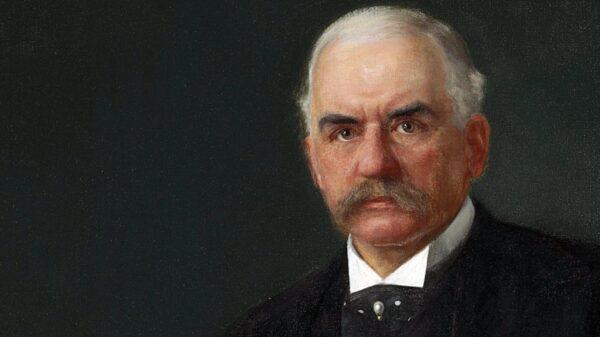






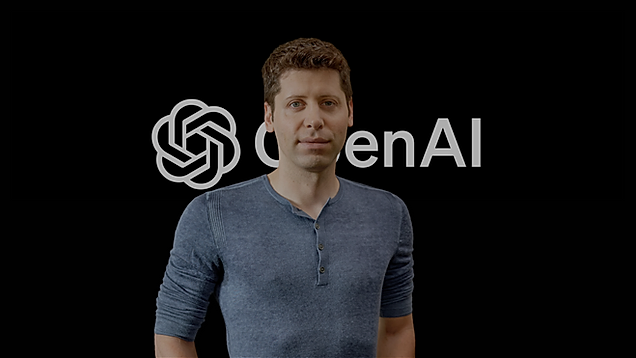
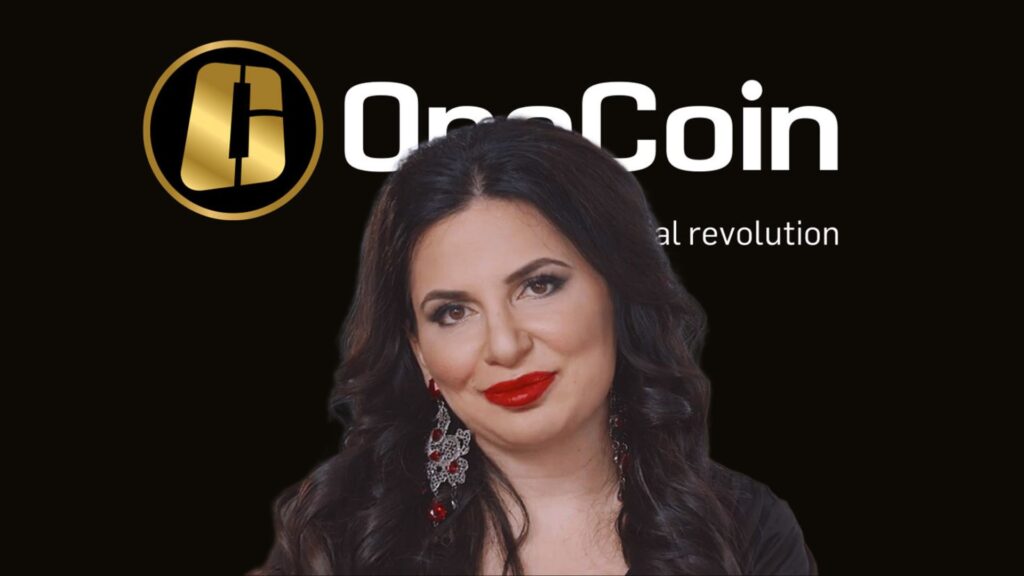


1 Comment. Leave new
[…] Read More: The Secret Psychology of TikTok – Why We Can’t Stop Scrolling […]